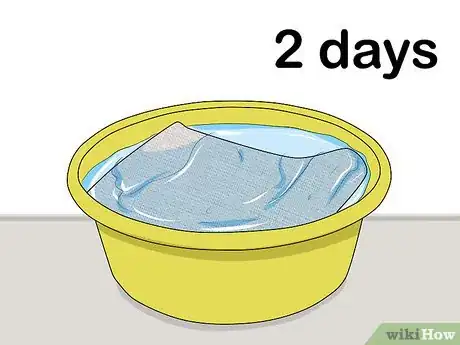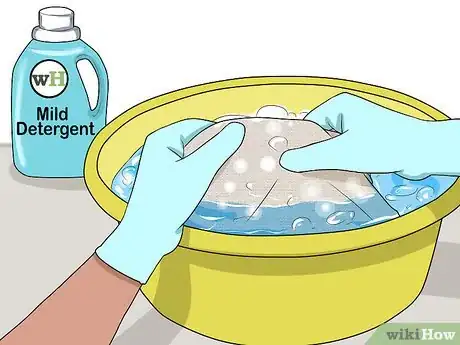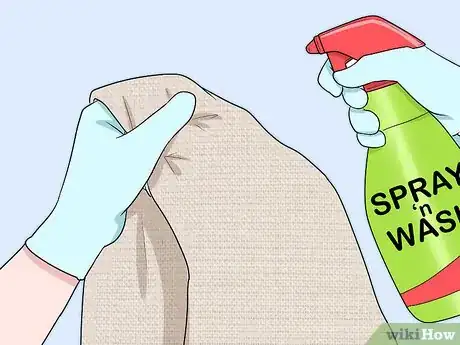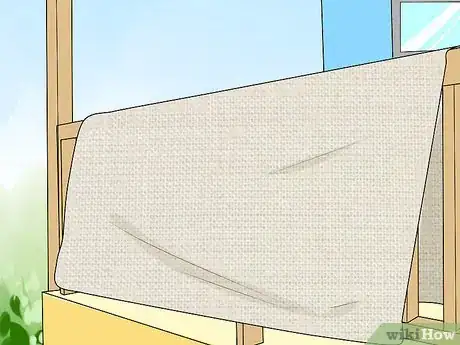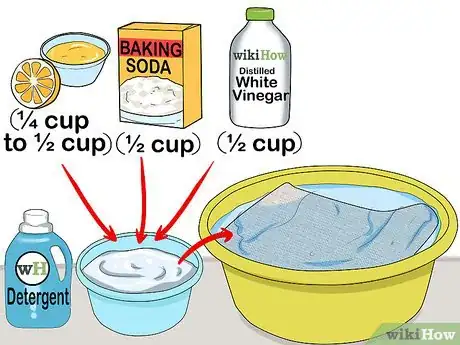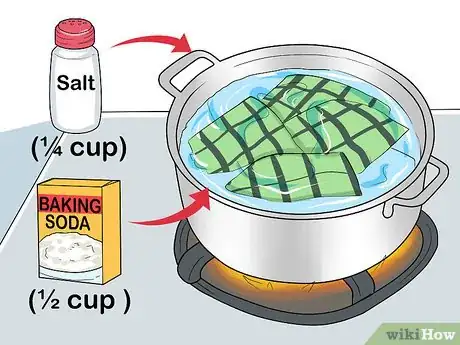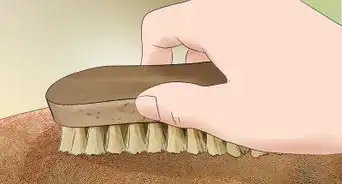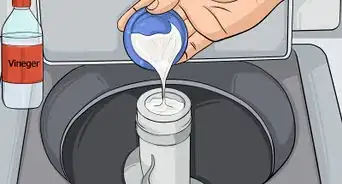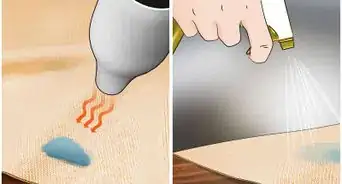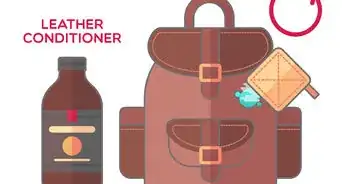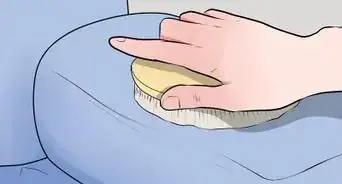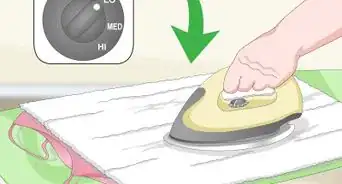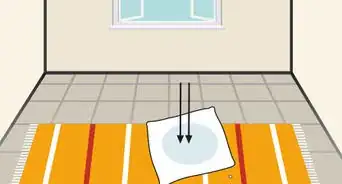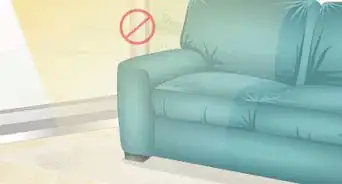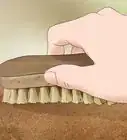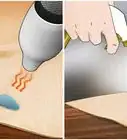This article was co-authored by Elias Weston. Elias Weston is a Cleaning Specialist and the Founder of Seatown Cleaners in Seattle, Washington. Elias specializes in helping clients find cleaning services with instant booking and flexible pricing. Seatown Cleaners offers standard, deep, and move-in/out cleaning services using green products and cleaning techniques. Every cleaner is thoroughly vetted and every cleaning is backed by a 100% money-back guarantee.
This article has been viewed 60,639 times.
Bleaching linen can be necessary both if the linen gets stained or if it is older white linen and has begun to yellow. Basic bleaching is pretty straightforward, but if you are sensitive to chemical bleach products, you can also use some natural methods to help keep linens white. By giving linens time to soak, treating stains, washing the linen properly, or using natural bleaching methods like sunlight and baking soda, you can bleach your linen to its best whiteness.
Steps
Washing Linens with Bleach
-
1Soak the linen immediately. For linens with stains, it is best to set them soaking as quickly as possible when you first notice the stain. Treating the stain quickly will help avoid the stain setting and becoming harder to remove later.[1] Put the linen in a bucket or tub that is completely clean and add water. Allow to soak for at least 2 days, but you can also allow linens to soak longer.
- It is often recommended to use cold water because hot water can make stains set, but others say hot water is the only way to remove stains. To be safe, stick with a cold water soak.
- It’s best to agitate the water every so often. You may also want to change the water depending on how bad the stain is. If the water starts to become obviously dirty, change it out for fresh water and continue the soak.
-
2Treat stains. Once the linens have soaked for a while, check them for remaining stains that need further treatment. Use a modern enzyme stain treatment like Spray 'n Wash or Shout. These modern stain removers have made many traditional methods obsolete. Spray a liberal amount on specific spots that need treatment. Allow the stain treatment to soak into the cloth before moving on.[2]
- It is recommended to never use chlorine bleach, even as a spot treatment, on linens because it can cause yellowing and deteriorate the fabric.
- In general, linen releases stains better than other fabrics do, so you may not actually need to do any further treatment besides soaking.
Advertisement -
3Wash the linen. If you are working with linen that is vintage or delicate, washing by hand is almost always what you want to do. Washing machines can be abrasive because of the rapid violent movement, especially machines with a center agitator. Use gentle washing motions; never twist or scrub the linen.[3] Wash it with warm water, a basic mild detergent, and powdered oxygen bleach. Follow the instructions on the bleach product, but in general it is concentrated pretty highly and you shouldn't need too much, only about one filled scoop. Be sure to separate white linens from dark or colored linens to avoid any bleeding of the colors or fading of the white linens.[4]
- An example of mild detergent would be something recommended for use on baby clothes like Dreft or All Free and Clear.
- Oxygen bleach is usually made with sodium percarbonate, so you can look for this in the ingredients when buying. Oxi Clean is a pretty standard bleach to use.
- If you are washing by hand, it is highly recommended that you wear rubber gloves to protect your hands from the chemical reaction of the bleach.
- If you wash linen in a washing machine, make sure it is on the gentle cycle.[5]
-
4Rinse the linen thoroughly. Most wash cycles have a rinse as part of it, but it can be good to send the linens through an extra rinse cycle. When washing by hand, rinse multiple times in fresh water each time.
-
5Check to see if the linen condition has improved. After all this, the stain you are fighting may still be present or the yellowing may not have subsided. If this is the case, it can be worthwhile to treat the stain a second time. Put the linen through the wash a second time.
-
6Allow linen to air dry. It is generally recommended that you never dry linens in the dryer. It is better for the fabric to have time to air dry. Laying the linen out flat will let it dry the best, although this is not always an option. You can also hang it on a clothesline, or drape it on a porch railing. If you do the latter, you will want to cover the railing with another cloth to keep the linen clean.[6]
- Depending on what the linen is for and if you are going to use it immediately, this is a good time to iron the linen while it is still damp.
- Tumble drying linen can cause it to wear out faster and to shrink.
Bleaching Without Bleach
-
1Let the sun do the work. Place your linens in direct sunlight, which is a natural way to bleach fabrics. It’s been a standard practice for centuries and still works wonders today. You can leave the linen in the sun for a few hours or up to a week depending on how well the piece is bleaching. Check it every so often to make sure it is not becoming damaged by prolonged exposure.
- Make sure the linen is damp when you lay it out in the sun. This will help it bleach better. You can either hang it on a clothes line, or if the piece is small enough, you can set it on a table or hang in off of your porch. You may want to consider putting a separate cloth over any wood or other surfaces the linen will touch to keep it clean.
- Spread the linen out flat and flip it periodically for the best bleach.
- The length of time you should leave the linen out can vary. Some people find that leaving it out for multiple days or a whole week gives the best results. Others feel that too much sun exposure can damage the fabric. Your best bet is to keep a watchful eye on your piece and make sure it doesn’t seem to become damaged. You could also avoid this by continuing to dampen it each day if you are leaving it out for a while.
- If you have particularly dark stains, try spraying a mixture of lemon juice and water on the spots before you put it in the sun. This will give those spots a boost to help reduce the stains.
-
2Use non-bleach alternatives in your laundry. Since bleach irritates a lot of people’s skin, it can be helpful to try out more natural alternatives which you can add right into your regular laundry loads. Lemon juice, vinegar, baking soda and hydrogen peroxide are all good stain removing and bleaching remedies. These are obviously less harsh methods, so they may also be less powerful than chemical bleach.[7]
- Try adding ¼ cup to ½ cup of lemon juice, ½ cup of baking soda or hydrogen peroxide (3%), or ½ cup to 1 cup of distilled white vinegar to your regular detergent.
- To pre-treat the stains before washing, you can use a solution made out of ½ cup of baking soda, ¼ cup of liquid dish soap, and 4 cups of water.[8]
-
3Heat and soak on the stove with salt and baking soda. This can be an especially good option for small linen items like napkins or handkerchiefs. Place the linens in a large pot of water and add ¼ cup salt and ½ cup baking soda, mixing both in well with the water. Place on the stove. Bring to a boil, and then turn off the burner. Leave these on the stove for 2 to 3 days.[9]
- You might want to change the water a couple times, but it is not absolutely necessary. You can also reheat the water a couple of times to boost the effect.
Expert Q&A
Did you know you can get expert answers for this article?
Unlock expert answers by supporting wikiHow
-
QuestionHow do you whiten yellowed linens?
 Bridgett PriceBridgett Price is a Cleaning Guru and Co-Owner of Maideasy, a maid service company that services the Phoenix, Arizona metropolitan area. She holds a Master of Management from the University of Phoenix, specializing in digital and traditional marketing.
Bridgett PriceBridgett Price is a Cleaning Guru and Co-Owner of Maideasy, a maid service company that services the Phoenix, Arizona metropolitan area. She holds a Master of Management from the University of Phoenix, specializing in digital and traditional marketing.
House Cleaning Professional
-
QuestionHow do you bleach linen sheets in the washing machine?
 Bridgett PriceBridgett Price is a Cleaning Guru and Co-Owner of Maideasy, a maid service company that services the Phoenix, Arizona metropolitan area. She holds a Master of Management from the University of Phoenix, specializing in digital and traditional marketing.
Bridgett PriceBridgett Price is a Cleaning Guru and Co-Owner of Maideasy, a maid service company that services the Phoenix, Arizona metropolitan area. She holds a Master of Management from the University of Phoenix, specializing in digital and traditional marketing.
House Cleaning Professional
-
QuestionCan I bleach colored linens white?
 Cm KayCommunity AnswerYou can make them fully off-white, but you also risk making the material brittle as you have taken the colored pigments out from the fibers in the process of making it white. That's too risky.
Cm KayCommunity AnswerYou can make them fully off-white, but you also risk making the material brittle as you have taken the colored pigments out from the fibers in the process of making it white. That's too risky.
Warnings
References
- ↑ Elias Weston. Cleaning Specialist. Expert Interview. 19 February 2021.
- ↑ http://www.ebay.com/gds/Laundering-a-White-Linen-Tablecloth-and-Napkins-/10000000009846249/g.html
- ↑ Elias Weston. Cleaning Specialist. Expert Interview. 19 February 2021.
- ↑ http://www.marthastewart.com/264206/how-to-get-brighter-whites
- ↑ Elias Weston. Cleaning Specialist. Expert Interview. 19 February 2021.
- ↑ https://www.linenme.com/news/how-to-wash-linen/
- ↑ https://www.apartmenttherapy.com/how-to-whiten-laundry-without-chlorine-bleach-109590
- ↑ Elias Weston. Cleaning Specialist. Expert Interview. 19 February 2021.
- ↑ http://www.onegoodthingbyjillee.com/2012/11/how-to-restore-stained-and-yellowed-linens.html
About This Article
Before your bleach your linens, soak them in cold water for at least 2 days, swishing them around a few times and changing the water if it’s dirty. Take a look after they’ve been soaking for a bit, and use a stain treater like Spray ‘n Wash or Shout on any stubborn stains. Time to wash? Separate your whites from any darker colors, then hand wash them using warm water, a mild detergent, and a powdered oxygen bleach, like Oxi Clean. Rinse everything several times before you lay your linens flat to dry. If you want to learn alternative ingredients to use rather than bleach, keep reading the article!
